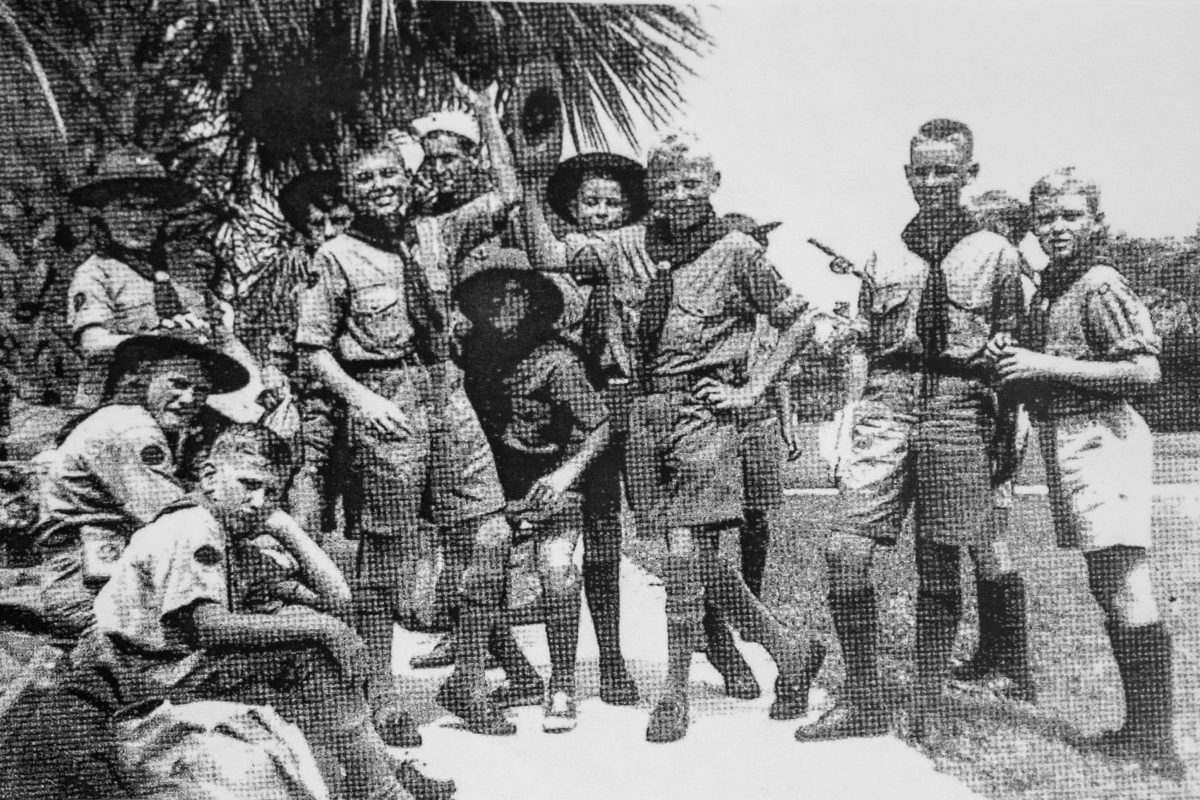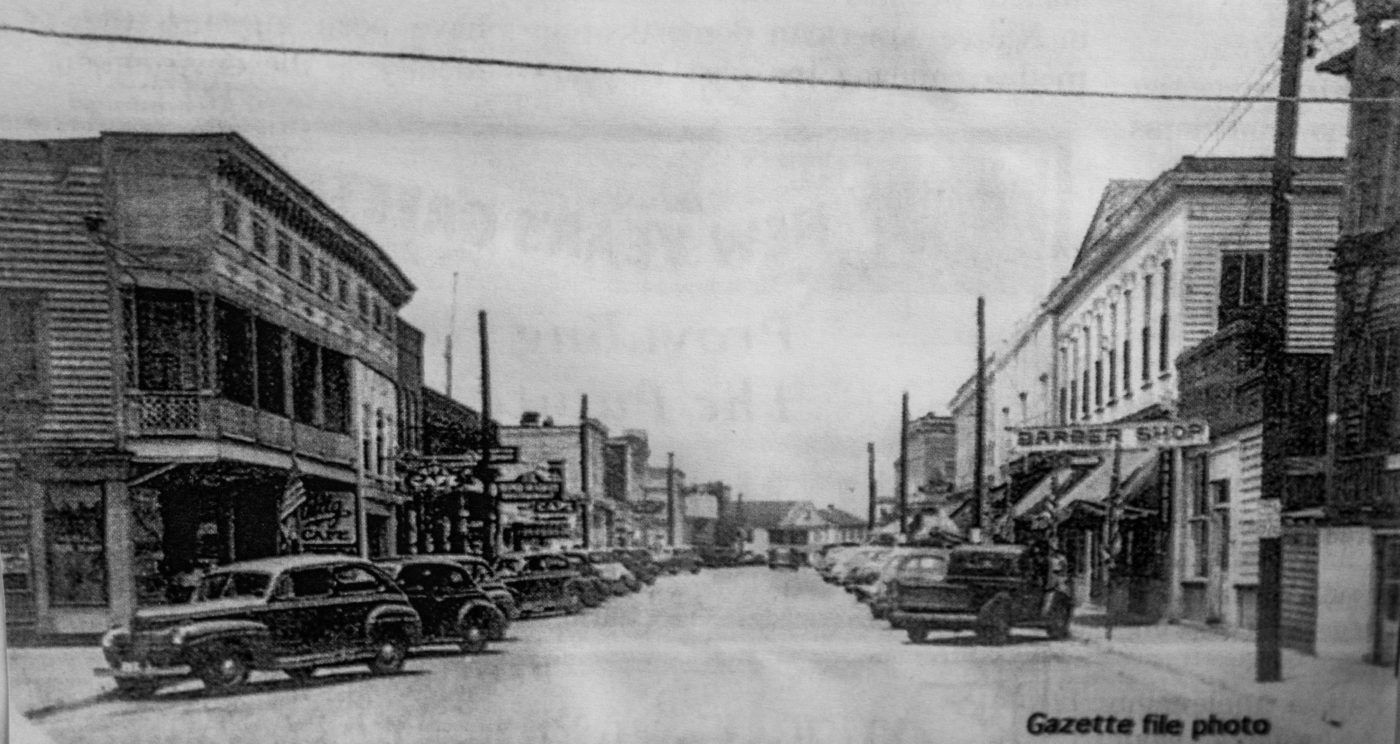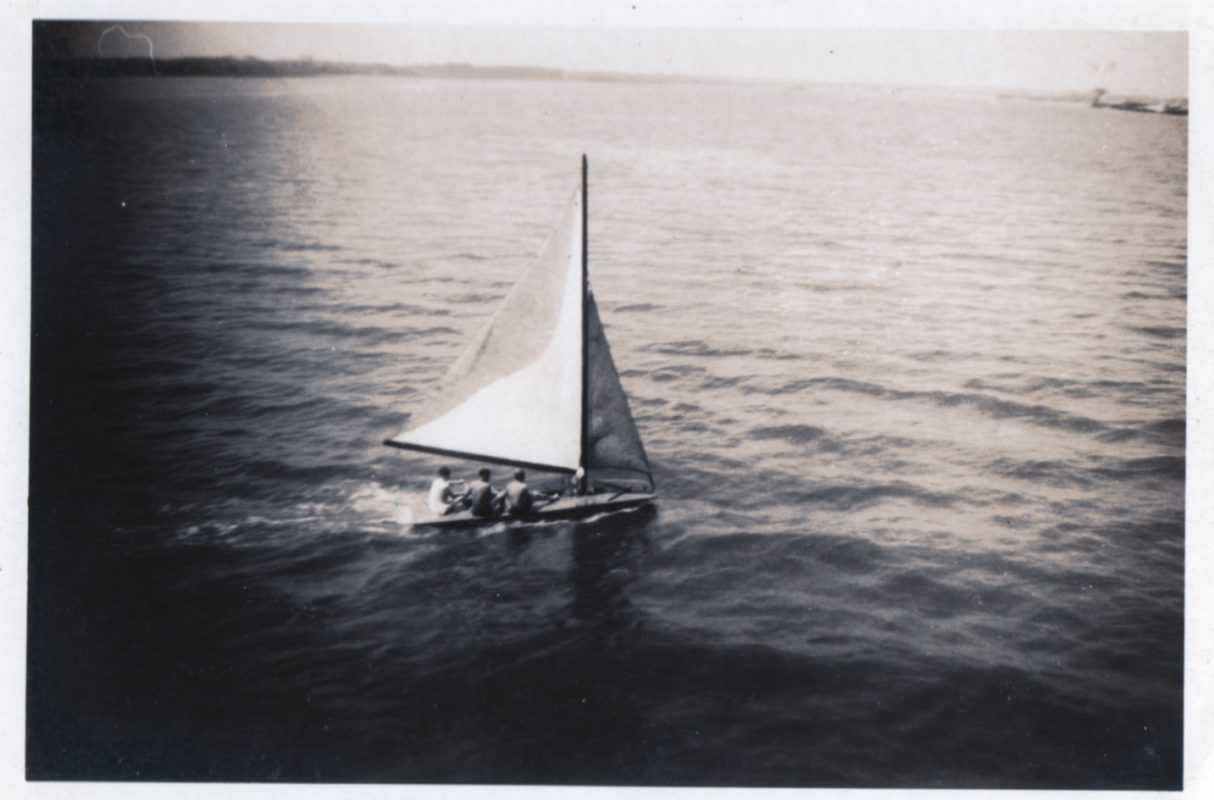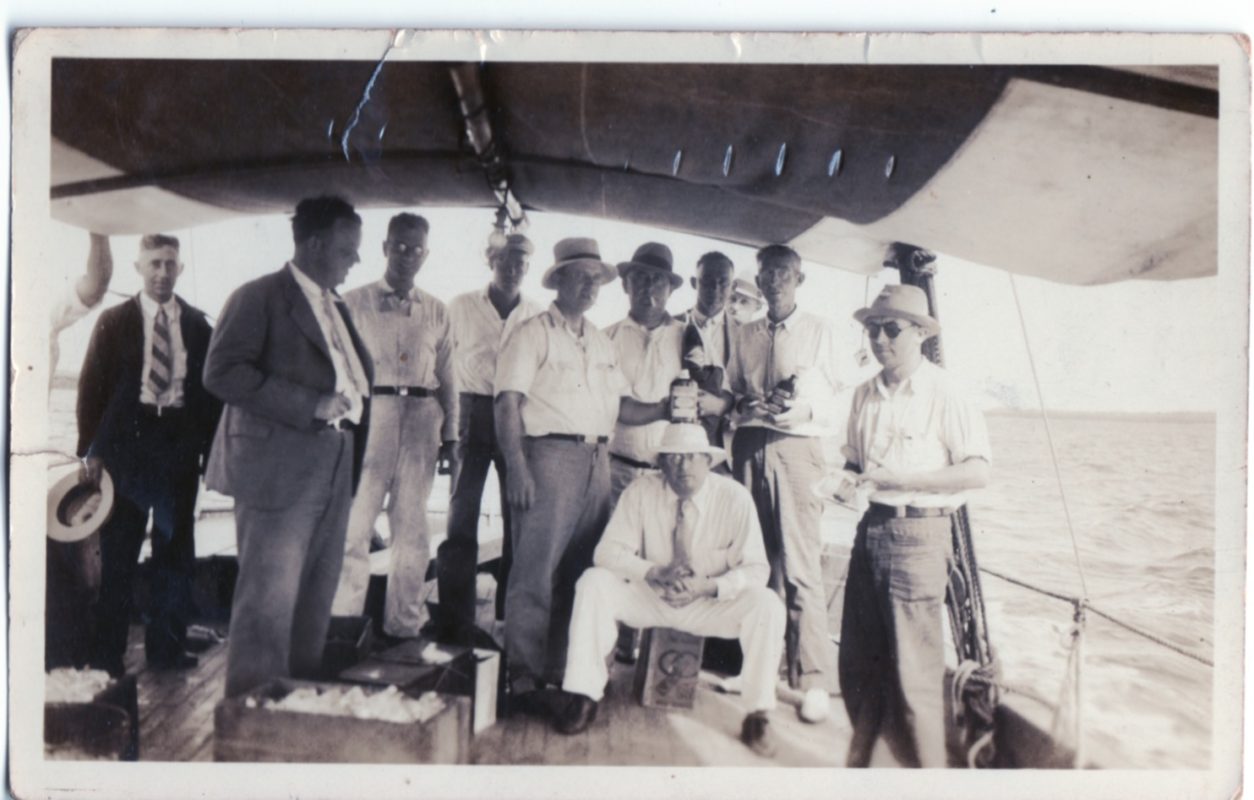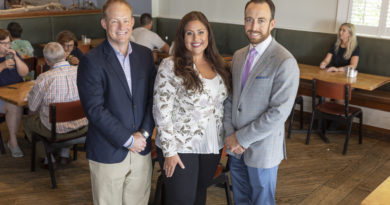ROBERT DELOACH
Tales of a Majestic Childhood
story by WENDY NILSEN POLLITZER photos by SUSAN DELOACH
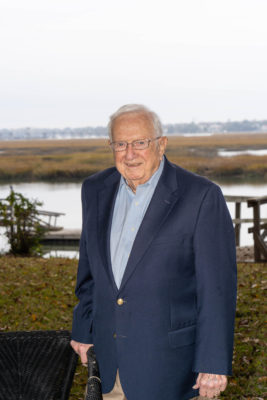 There is a walking and talking time capsule of memories in Beaufort. He is a sailor, an angler, an engineer, a photographer, and a forever family man. He is also one of a rare breed of Beaufortonians … one who was born, raised, and remains here. This ninety-five-year-old has flowed with the tide of a true coastal life and continues to share revered tales of his majestic childhood on the banks of the Beaufort River and beyond.
There is a walking and talking time capsule of memories in Beaufort. He is a sailor, an angler, an engineer, a photographer, and a forever family man. He is also one of a rare breed of Beaufortonians … one who was born, raised, and remains here. This ninety-five-year-old has flowed with the tide of a true coastal life and continues to share revered tales of his majestic childhood on the banks of the Beaufort River and beyond.
Robert DeLoach is more than a living Beaufort legend; he is Lowcountry royalty. A descendant of the House of Bourbon, the Chateau de Loches is located in Loches, Duchy of Anjou. In 1482, Anjou became part of France. The family’s history dates back to the 10th century. They planted their roots in America in 1630. His third great-grandfather lived in Beaufort and was listed in the 1790 census. The patriarch of the Beaufort DeLoach family first settled on Prince Street in 1921 when he accepted a job at the Dick Horn Ford Motor Company. Robert was born in 1926, the third of four children. Eight years later, they moved to their forever family home at 163 Ribaut Road in 1934. The road was still dirt, and Robert remembers when it was considered a “country” road. He remembers stories of yesteryear when times were simpler, everyone knew each other, and the boys of Beaufort invented the term “fun in the sun.”
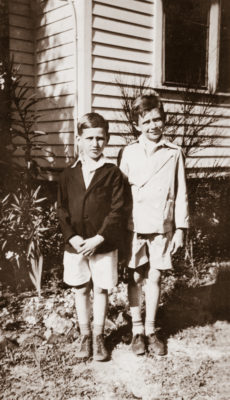
There were four distinct groups of boys during Robert’s childhood: the Point boys, the Bluff boys, the Port Royal boys, and the Parris Island boys. Beaufort did not have a coordinated sports league then, so these boys created their own. Most weekends, they played football and baseball with teams designated by their geographical area west and east of Ribaut Road. They played on The Green at The Old Point, the high school (now the elementary school) on Ribaut, the field beside Port Royal Elementary, and, when it worked out, the practice field at Parris Island.
Most of the boys worked downtown on Bay, where there were two hardware stores, a furniture warehouse, two filling stations, a grocery store, a five and dime, a shoe store, a clothing store, a doctor, a dentist, and a meat market among other small businesses. Kids worked Fridays, Saturdays, and Mondays. Sometimes, they were let off early to join their high school team when games played on Friday. When the day was over, the kids and adults would sometimes go to the Community Club on Carteret Street to attend dances and get-togethers. It was also the place where the town voted.
Even though most recreational pursuits were planned impromptu by the boys, the community did have a few organized activities. Robert was a member of Boy Scout Troop #1 (still active today in Beaufort). Preacher Mays from First Presbyterian was Robert’s scoutmaster. He recalls going to Montreat in North Carolina, a camp for boys 12-15 years of age, and he was not quite twelve but went anyway. They learned all kinds of basic life and survival skills that they were eager to test back home.
As World War II started, some boys went to Parris Island to “dig for bombs.” The Marine Corps surprisingly allowed them on base, and they would scout where the bomb hit on Page Field Bombing Range, dig it up, and collect a variety of ammunition and bombs. Robert proudly brought his findings back to his dad’s shed, but his brother on leave from the military made him call the Coast Guard to retrieve the youth’s treasures of unexploded ordinance.
Similarly, during the war on a weekend in 1942, almost forty boys left Beaufort in bateaus to camp on Bay Point. En route to the deserted beach, the wind picked up, and they drifted with the tide on to the shore near Fort Fremont. They found sanctuary in the old fort for the night and continued their journey with the morning light. They spent the next night on Bay Point. Roaming the beach, they found oars from lifeboats, flares, and dark-colored pieces of oil, or tarballs, and remnants of sunken tankers destroyed by German submarines offshore. Again, they turned their prized artifacts over to the Coast Guard.
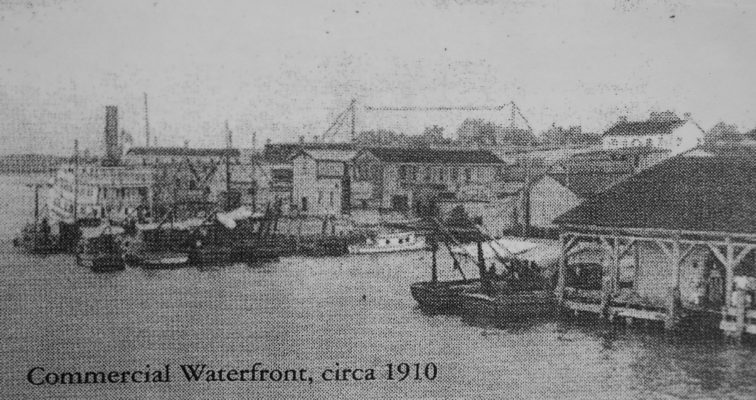
They spent the next night on Bay Point. The following day, Robert and his friend, Paul Eve, attempted to equip their bateaus with a sail to get home. The tide took them the other way into Port Royal Sound, and thankfully, the Owanee (owned by Mr. F.W. Scheper II) saw them and towed them back to Beaufort.
Robert and his friends had a hobby … competitive sailing in the South Atlantic Racing Association (SARA) races. They sailed 18’ Scows, wide-beamed scows. The boats required three people to navigate, one at jib, one at the mainsail, and one as the skipper. Robert recalls racing his brother’s boat, the Typhoon, against locals and boats from Charleston, Rockville, and Savannah.
“There would be up to two hundred boats in Beaufort River during races. Class A boats (larger than 20 feet) would sail to the Port Royal buoy and back, and all others would sail to the Spanish Point buoy and back,” smiles Robert.
The young men also traveled to other cities to sail in SARA races. Mr. F.W. Scheper’s boat, Owanee, pulled the smaller boats to Rockville, Savannah, Charleston, and Wilmington to race Scows and Lightnings. Robert gained a fascination with sailboats of the Lowcountry and remembers the Mischief from Wilmington, NC, an Inland Lake Scow, and the Syndicate and the Viking, some of the fastest boats on the Intracoastal.
Robert became an original Charter member of Beaufort Yacht and Sailing Club, and his brother, Gene, was the first Commodore.
Robert loved and still loves the water. Aside from sailing, he also learned fishing from his dad. As a child, the men of Beaufort went fishing in their coats, gentlemen’s hats, and ties. They caught trout, bass, and red snapper with handlines and taught their sons the patience of fishing and the reward of camaraderie.
Robert remembers the day that a group of Beaufort men, fishing the snapper banks on Captain Geechie’s boat, caught a red snapper weighing approximately 300 pounds, fishing with hand lines. They took it to the ice plant in Burton, froze it in a block of ice, and put it on display in the window at the Silver Fish Company on Bay Street owned by Mr. Hoffman.

Robert DeLoach is a walking history book of early to mid-twentieth century Beaufort. The many stories and memories he shared with me are priceless. Below are a few recollections:
Beaufortonians only traveled by ferry to Lady’s Island until the draw bridge was built in 1927. The bridge to Hunting Island was built in 1940. The paved road ended at Frogmore (now called St. Helena) and was dirt the rest of the way to the Harbor River. “The farmers used to make money pulling people out of the dirt road on St. Helena Island, traveling to and from Harbor River,” Robert laughs.
He remembers the Buzzard’s Roost bench on the sidewalk of Bay Street. Some men sat on the bench on Saturdays, telling tall tales and eating peanuts. Mrs. Dessie DeLoach roasted fresh peanuts, and Robert and his brother rode their bikes to town and sold them for a nickel a bag. “The Dempseys would show up on the scene with a truck full of boiled peanuts for a nickel a bag too,” Robert chuckles as he explains friendly competition.
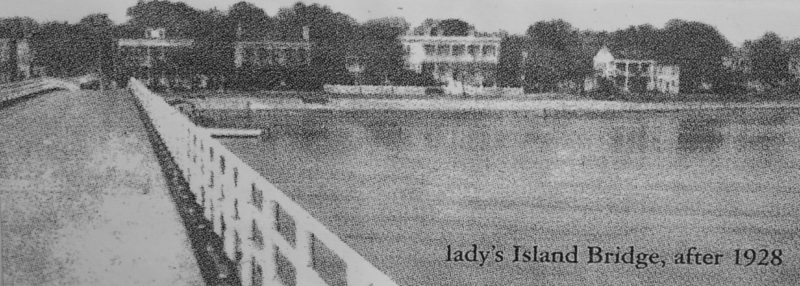
“There were no motels in Beaufort. People visiting or working in Beaufort lived in boarding houses or just rented rooms in people’s homes. The boarding houses served breakfast and dinner,” explains Robert. “The boarding houses I remember were The Beaufort Inn, Mrs. Maddox’s, Mrs. Barber’s, and Mrs. Haskel’s, who lived in Tidalholm.”
And when I said earlier that everyone knew everyone in Beaufort, they also knew everyone’s business. The post office was located where Lowcountry Produce is now. The Post Office Box numbers were two or three digits. “Our P.O. Box was 125, and that was also our phone number. Every family had different rings. And they were full party lines, which meant the operator and the other parties on the party line heard everything … which really meant there were no secrets in town,” laughs Robert.
There was a two-cell jail on Port Republic Street where the library is now located. The cells were kept ventilated with the barred windows and doors open, and everyone could see who was in jail.
“During the hurricane of 1940, the DeLoach and McTeer families spent the night in the new jail because it was safe. Robert and Georgianna McTeer Cook joked that they actually spent the night in jail,” smiles Robert.
Hurricanes were no joke in Beaufort. During Hurricane Gracie in 1959, Robert watched the shingles come off his current residence as water rushed in, and his wife fed a 6-week-old baby with a bottle heated by candlelight. After the storm, he drove Col. Hamilton to Mitchellville to retrieve his medicine. Col. Hamilton never forgot when it was time to sell his boat, and sold to Robert for an affordable price.
Many other tales fill Robert’s memories with joyful chuckles.

Here are a few:
“Mr. Gregory, who was blind, ran the Texaco Oil business. He could tell the difference between a twenty, a ten, five- and one-dollars bills by touch!”
“My father, Bill DeLoach, an associate and a chauffeur, was returning to Beaufort from Savannah. When they reached the Whale Branch Bridge, at the time a single-lane bridge, they had to stop and wait for traffic to pass before crossing. They had imbibed white lighting and felt good when they saw a giraffe walking across the bridge!” He asked the other, “Did you see a giraffe?” They replied, “YES!” Next, they saw an elephant. Bill asked the same question and got the same response. He told the chauffeur to throw the liquor out of the window. He did not know that a circus had come to town and the vehicles carrying the animals were too heavy to cross with the animals on board, so they unloaded the animals and walked them across the bridge.
 His home was the first house built on Sunset Bluff. The family moved in on July 4, 1958, and he still lives there today. Robert now shares his home on Factory Creek with his wife, Cooky. For a decade, he has taken photos of sunsets from his dock. With over three thousand photos on his phone, Robert cites one as his most beloved.
His home was the first house built on Sunset Bluff. The family moved in on July 4, 1958, and he still lives there today. Robert now shares his home on Factory Creek with his wife, Cooky. For a decade, he has taken photos of sunsets from his dock. With over three thousand photos on his phone, Robert cites one as his most beloved.
“It was the week of Easter in 2015. I snapped a photo, and there is clearly an image of the cross in the reflection on Factory Creek,” he says. “I saw it, and it was truly an image that sent a message of Faith and Hope.” And the picture defines the man who Robert DeLoach is, a man of God. Thank you, Mr. DeLoach, for a delightful chat and for sharing memories that will forever describe the Beaufort in your heart and the happiness in your soul.
Robert was a World War II Veteran and discharged from the US Navy in 1946. He graduated from Clemson with a BS degree in Mechanical Engineering in 1950. He married his wife, Ginny, in 1953 and had three sons, Allauid (Aggie), Charles, and Craig. He retired from 38 years of service with the Department of Defense at Parris Island. He worked for thirty-one years at Beaufort Engineering Services. In 2012, he received the Civitas Lifetime Achievement Award from Beaufort Regional Chamber of Commerce.


